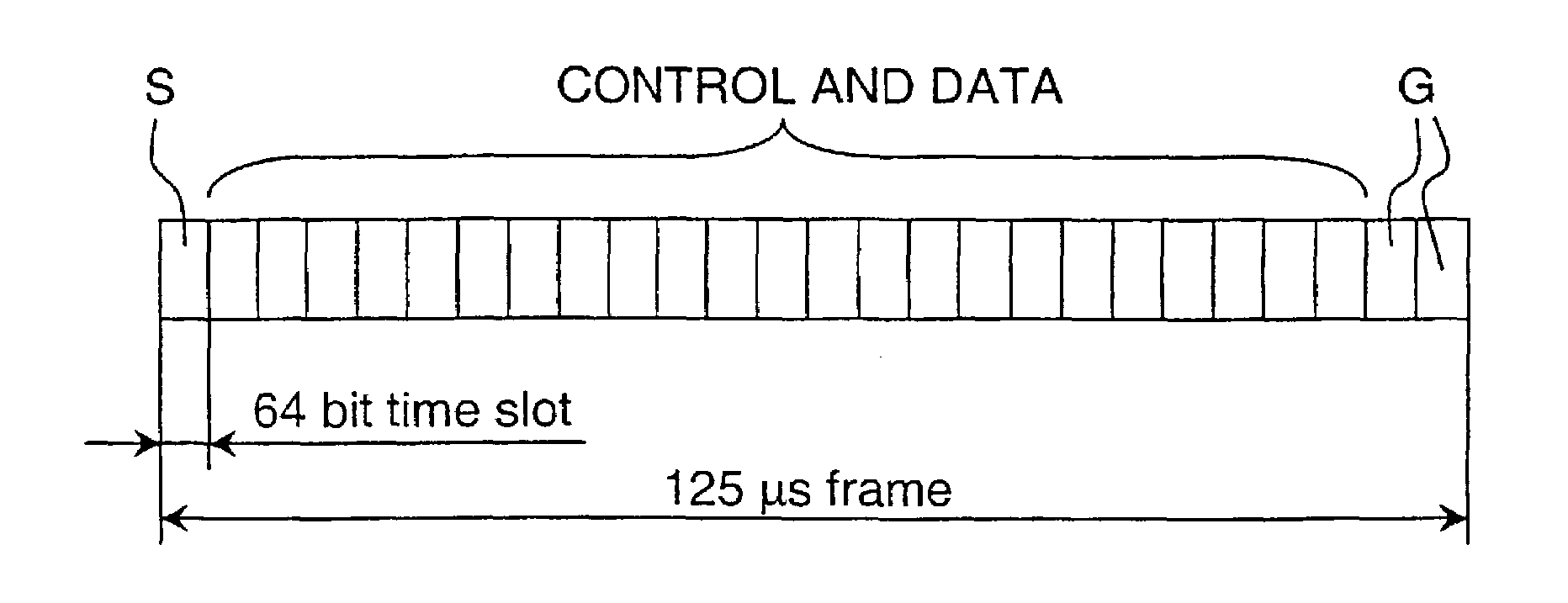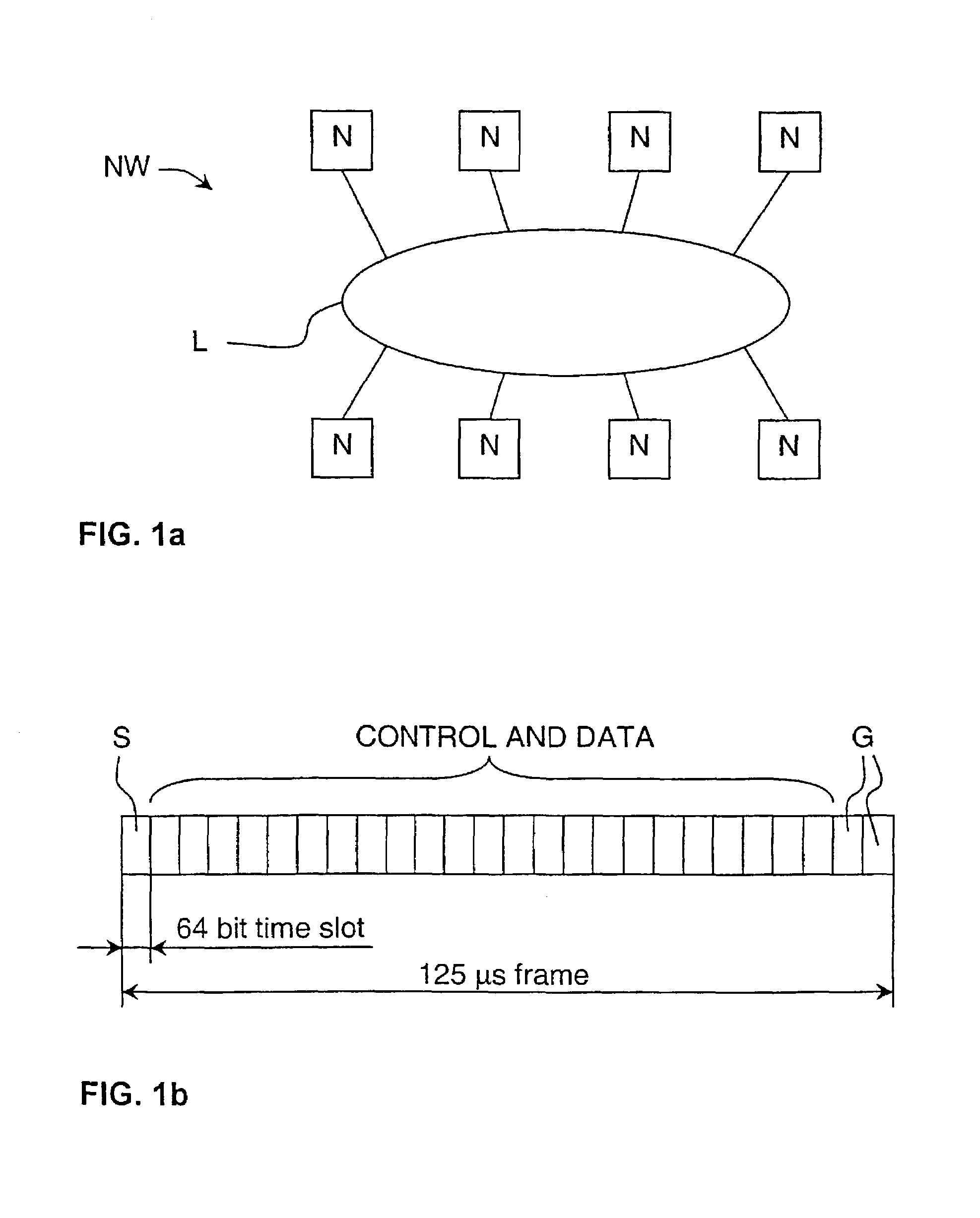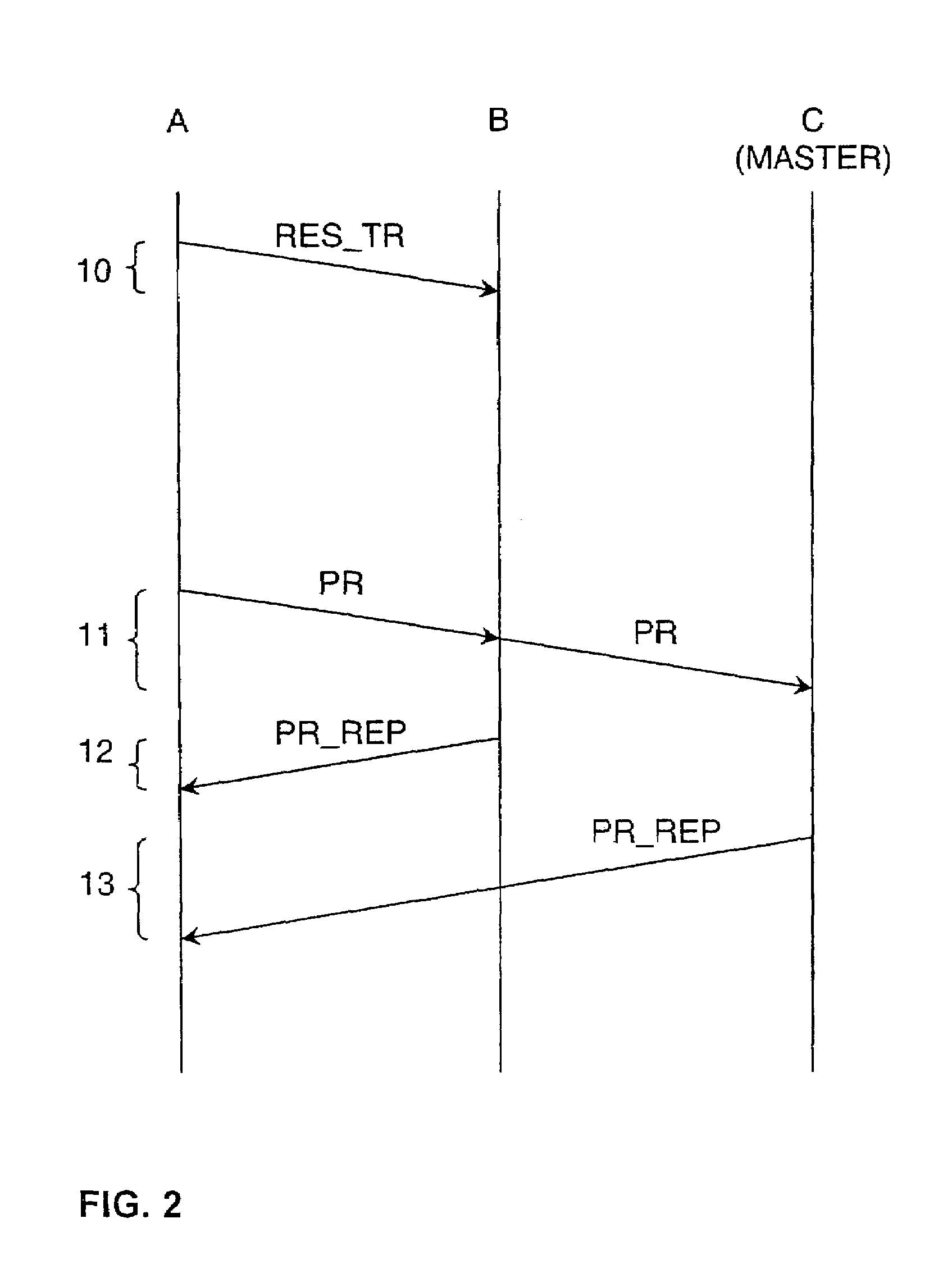Methods for controlling resources in a communication network
- Summary
- Abstract
- Description
- Claims
- Application Information
AI Technical Summary
Benefits of technology
Problems solved by technology
Method used
Image
Examples
Embodiment Construction
[0026]An exemplary communication network NW of the kind addressed by the invention is shown in FIG. 1a and comprises a plurality of nodes N that are interconnected via a single-ring link L. One the link L, a recurrent, essentially fixed size frame of the kind illustrated in FIG. 1b is transported uni-directionally. In the exemplified network, each frame has a nominal duration of 125 μs and is divided into a plurality of 64-bit time slots. The start of each frame is identified by a so-called synchronisation slot S, and the end of each frame is provided with so-called guard band slots G included to accommodate for small jitters in the network frame frequency. The remaining slots of the frame are control and data slots used for transporting control signalling and payload data, respectively, between the nodes N on the link L.
[0027]Write access to the control and data slots are distributed, and may at any time be re-distributed as desired, among the nodes N connected to the link L.
[0028]...
PUM
 Login to View More
Login to View More Abstract
Description
Claims
Application Information
 Login to View More
Login to View More - R&D
- Intellectual Property
- Life Sciences
- Materials
- Tech Scout
- Unparalleled Data Quality
- Higher Quality Content
- 60% Fewer Hallucinations
Browse by: Latest US Patents, China's latest patents, Technical Efficacy Thesaurus, Application Domain, Technology Topic, Popular Technical Reports.
© 2025 PatSnap. All rights reserved.Legal|Privacy policy|Modern Slavery Act Transparency Statement|Sitemap|About US| Contact US: help@patsnap.com



